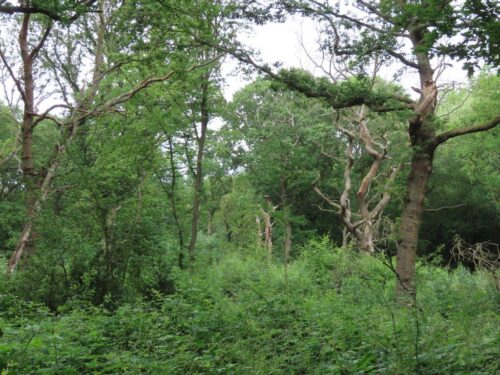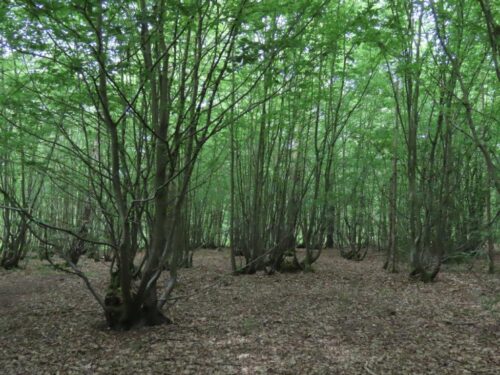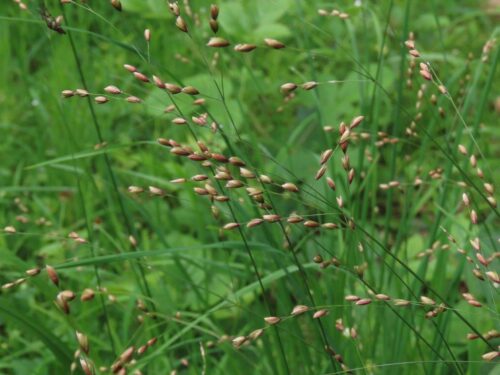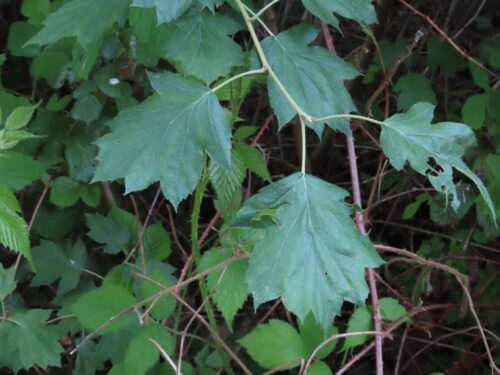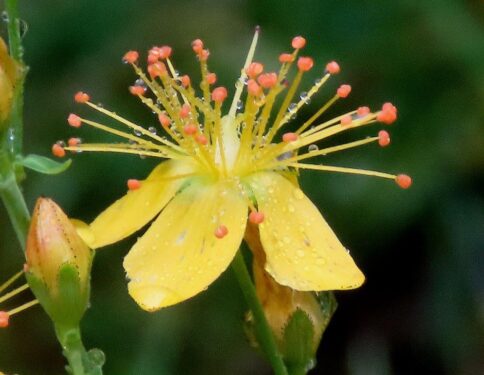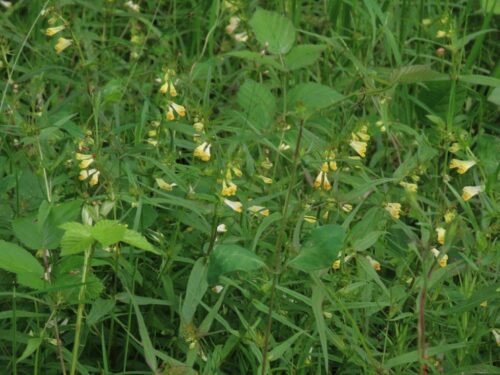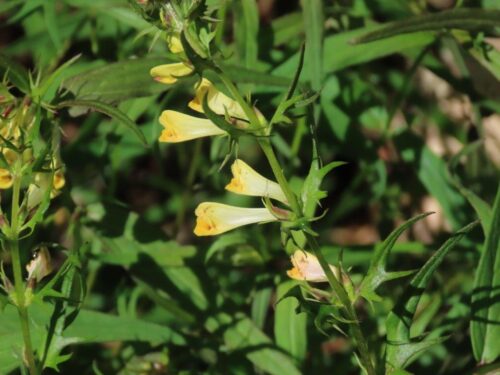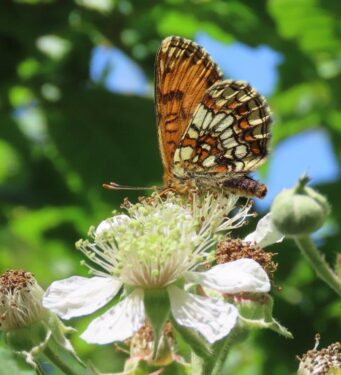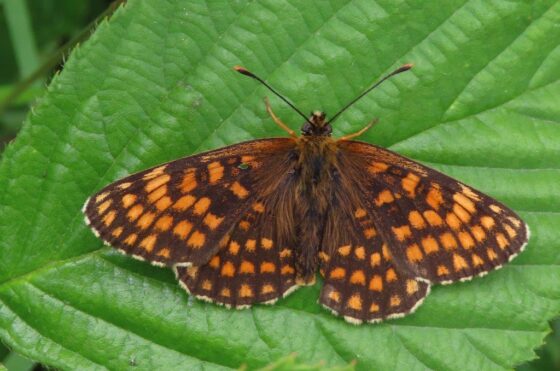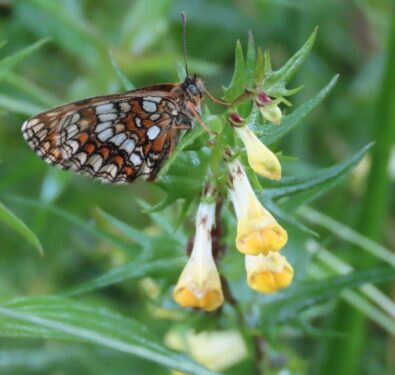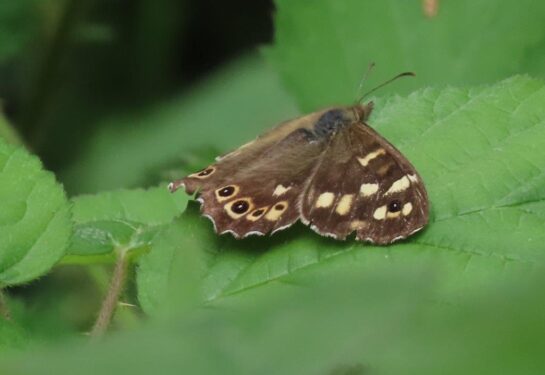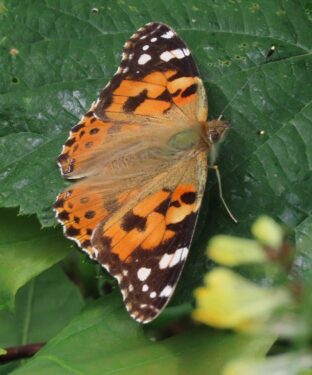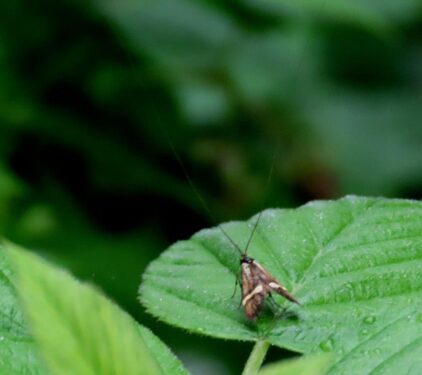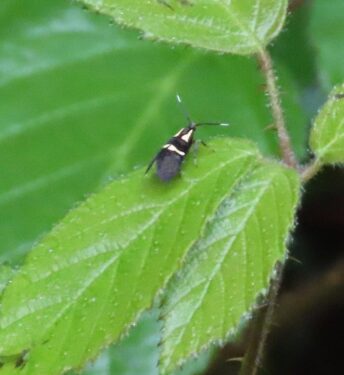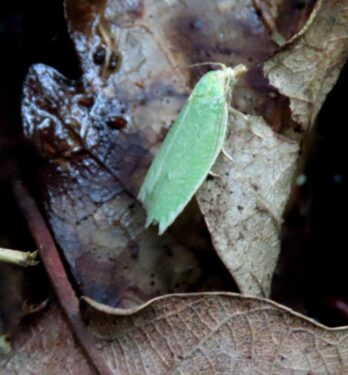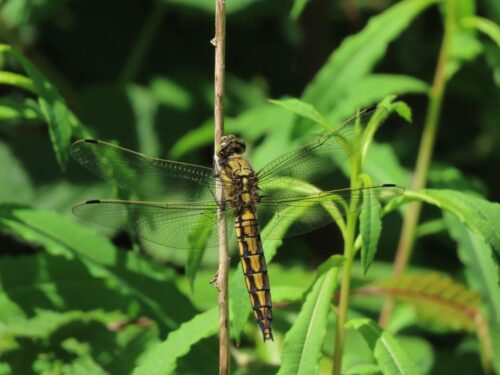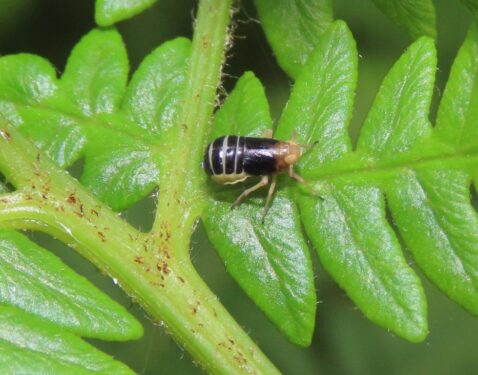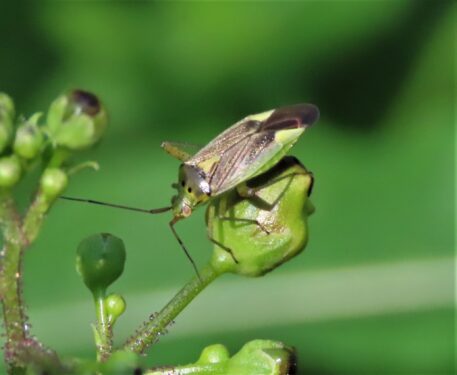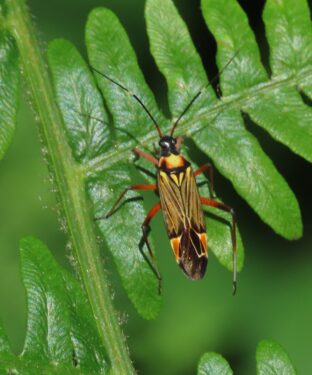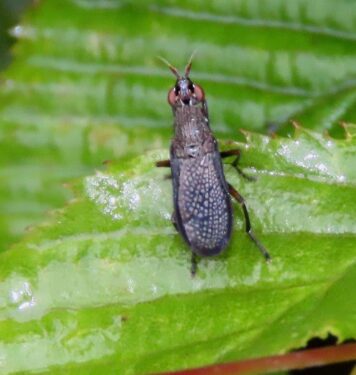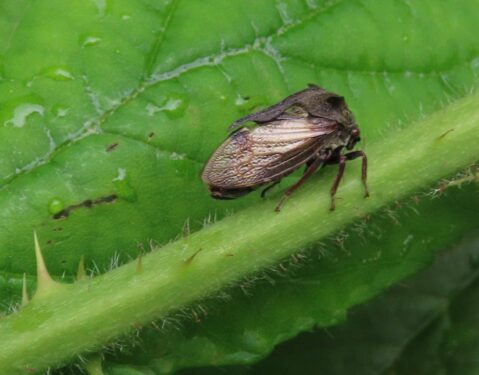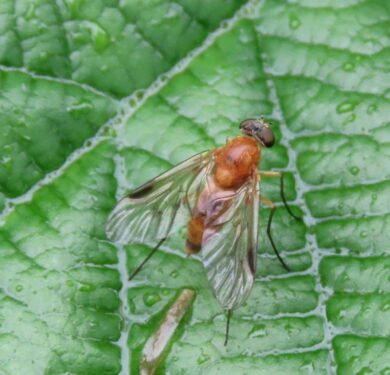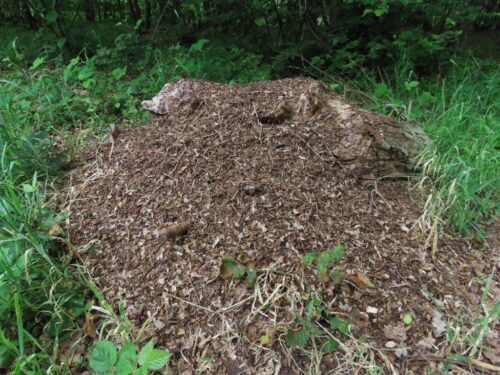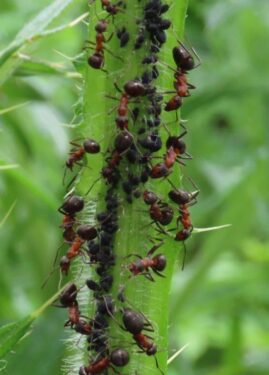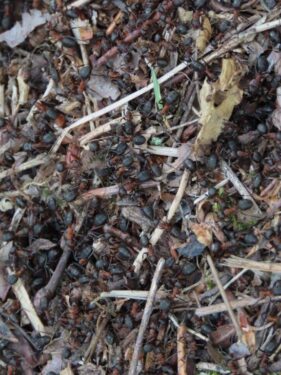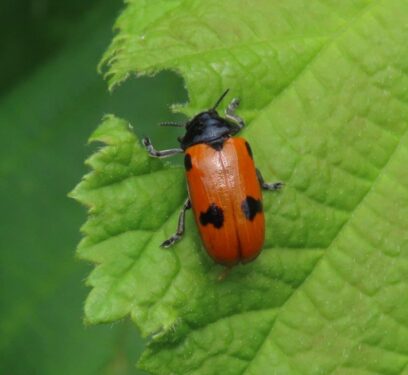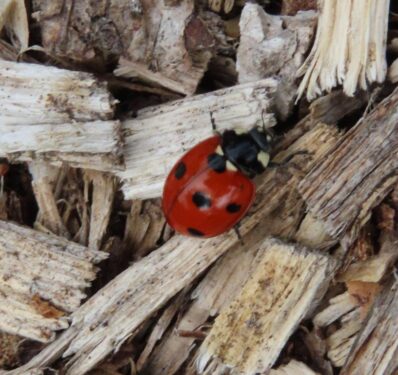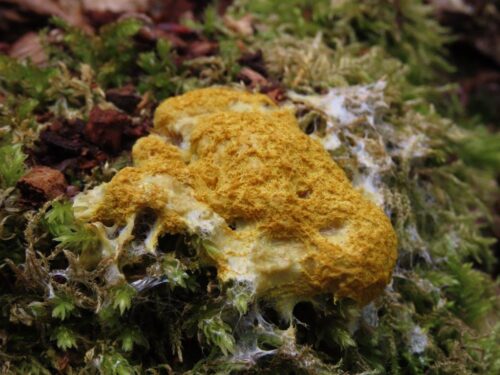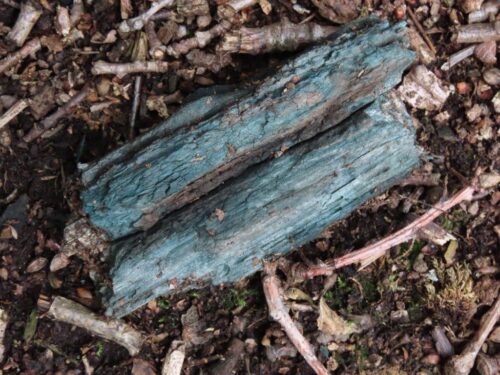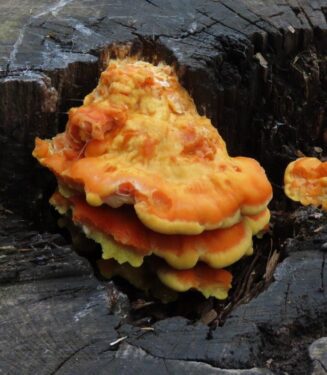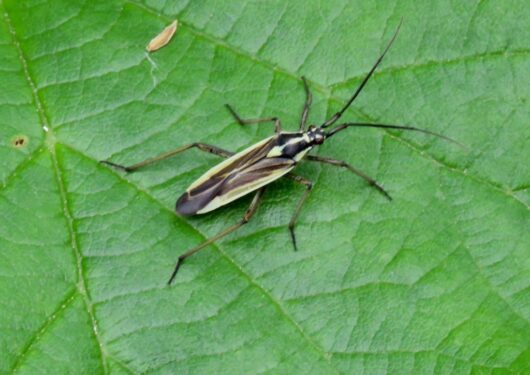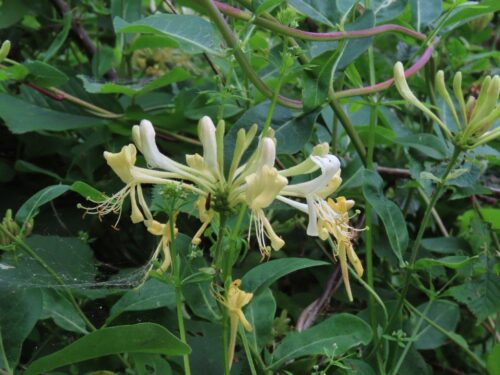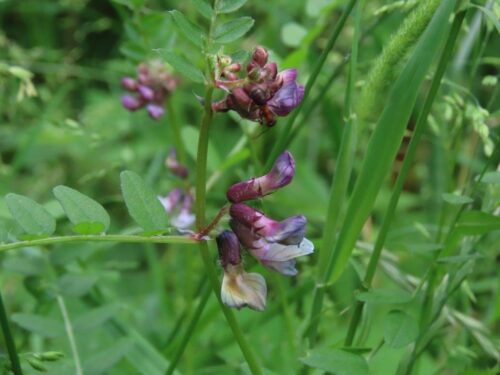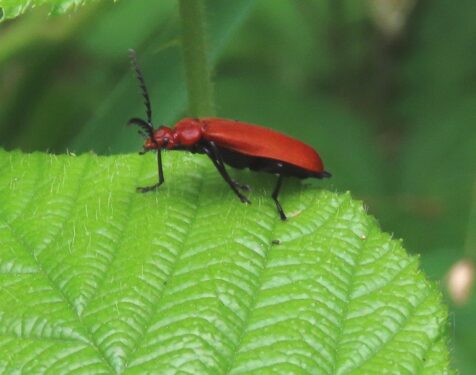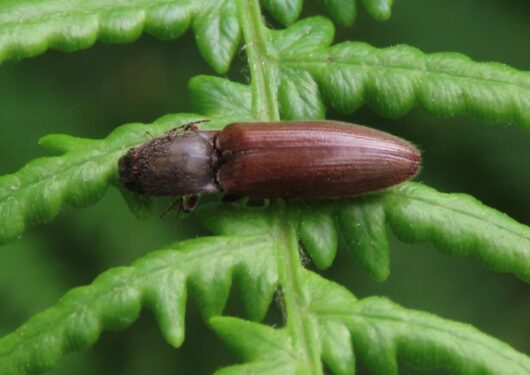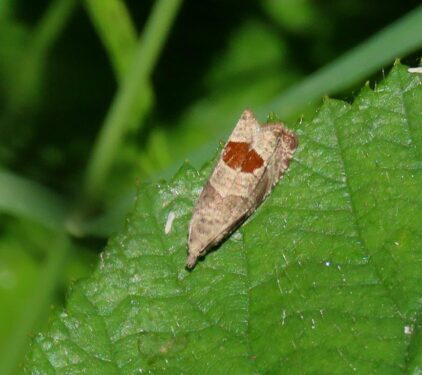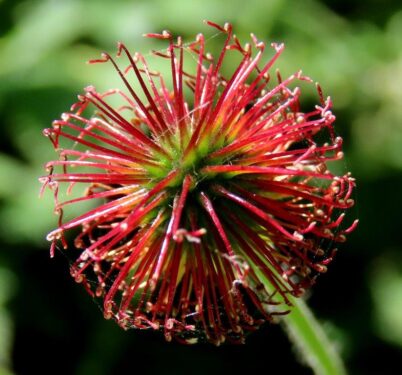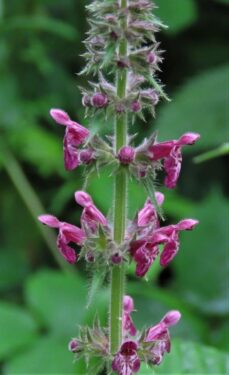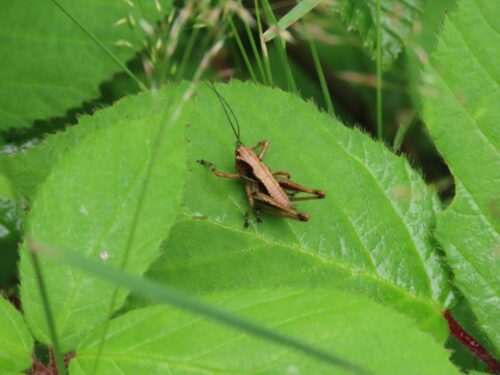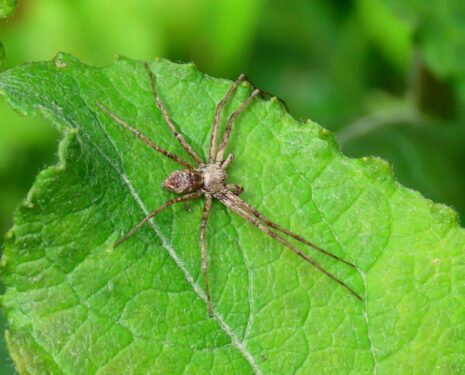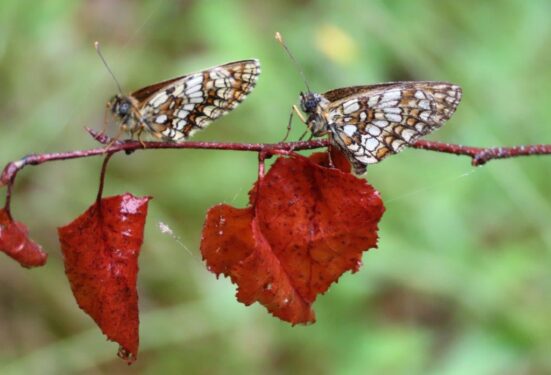The Wild Side of Essex moved to Hockley Woods for June. The largest contiguous ancient woodlands in the county, they sit astride the ‘southern Essex Alps’, a ridge of London Clay capped with sands and gravels, and as a result riven by spring lines which form the headwaters of the River Crouch.
The Oaks in the wood are both Pedunculate and Sessile (and their hybrids); Hornbeam (in places replanted with Sweet Chestnut) forms the other main woodland type. While the woods are well past their floral best in June, there were still many ancient woodland indicators visible, including Wild Service-tree, Butcher’s-broom and THE most beautiful grass, Wood Melick.
Another botanical star was Slender St John’s Wort, always an orange-flushed beauty, but perhaps even more magical when bedecked in mercurial raindrops.
And in the interlinked rides and recent coppice plots, Common Cow-wheat – which of course was the reason for the main focus of our visits, the Heath Fritillary whose caterpillars feed on only that food-plant, at least in south-eastern England.
It has been a long, complex story of neglect, extinction, research and reintroduction but we do now have a thriving population of the fritillaries. This year they were late emerging, the first coming out on my recce visit, the peak emergence (200+) on our first day walk, and fewer on the two subsequent trips.
However, the lower numbers were not just due to the season, but also the weather: from 32 degrees and full sun on the first walk, to cool cloud on the second, and almost continual rain for the third. At least those we did see on the later trips we saw well, even if largely with wings closed….
Not many other butterflies though, as most of the summer species were not yet out (indeed Brimstones were still featuring in mid-month), save for a few Meadow Browns and Large Skippers. Certainly no White Admirals or Silver-washed Fritillaries, which this year will be a July feature.
Attractive micromoths included Gold-barred Longhorn and Dasycera olivella, plus the first adult Green Oak-rollers, the larvae of which seem to have ensured a productive breeding season (rather bucking the national trend) of Great and Blue Tits.
A good selection of other insects also entertained us, from Black-tailed Skimmer to Bracken Planthopper, and Closterotomus trivialis to Miris striatus.
The snail-killing fly Coremacera marginata was quite numerous by the end of the month, and another particular highlight was Horned Treehopper, something I have never seen before, but always wanted to. A further highlight was the Tree Snipe-fly Chrysopilus laetus, only the second Essex site for this species,
Another major feature of this wood is the density of Southern Wood Ants’ nests, very unusually for Essex. The ants were everywhere, carrying food back to the nest and ‘milking’ aphids for honeydew…
… and we did manage to come across a very few examples of two of the scarce insect inhabitants of the nests, Four-spotted Leaf-beetle and Scarce Seven-spot Ladybird, the larvae of which act as both predator and garbage cleaner in the nests.
Add to that whole host of other attractions, from fungi to slime moulds. All kinds of everything: rich biodiversity in the heart of suburban south Essex. More than 30 years since I notified the woods as an SSSI, I am very happy to report they are now in an even better state than when I moved on (even after 18 months’ pandemic pressure), thanks to the ceaseless management work of Rochford District Council.
